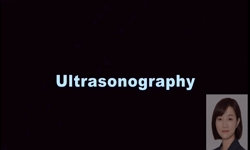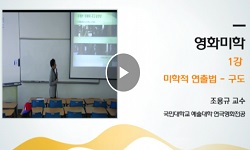Purpose: In this study, we used ultrasonography to monitor the use of hyaluronic acid (HA) as a filler in the face for esthetic reasons. We monitored changes in the filler shape, distribution, and relationship with adjacent anatomical structures over ...
http://chineseinput.net/에서 pinyin(병음)방식으로 중국어를 변환할 수 있습니다.
변환된 중국어를 복사하여 사용하시면 됩니다.
- 中文 을 입력하시려면 zhongwen을 입력하시고 space를누르시면됩니다.
- 北京 을 입력하시려면 beijing을 입력하시고 space를 누르시면 됩니다.


Ultrasonography for long-term evaluation of hyaluronic acid filler in the face: A technical report of 180 days of follow-up
한글로보기https://www.riss.kr/link?id=A106914113
-
저자
Luiz Paulo Carvalho Rocha (Department of Morphology, Institute of Biological Sciences, Universidade Federal de Minas Gerais, Belo Horizonte, Brazil.) ; Tânia de Carvalho Rocha (Hermes Pardini Group, Belo Horizonte, Brazil.) ; Stephanie de Cássia Carvalho Rocha (Hermes Pardini Group, Belo Horizonte, Brazil.) ; Patrícia Valéria Henrique (Nucleodonto, Brasília, Brazil.) ; Flávio Ricardo Manzi (Department of Dentistry, Oral Radiology, Pontifical Catholic University of Minas Gerais, Belo Horizonte, Brazil.) ; Micena Roberta Miranda Alves e Silva (Department of Morphology, Institute of Biological Sciences, Universidade Federal de Minas Gerais, Belo Horizonte, Brazil.)
- 발행기관
- 학술지명
- 권호사항
-
발행연도
2020
-
작성언어
English
- 주제어
-
등재정보
KCI등재,SCOPUS,ESCI
-
자료형태
학술저널
- 발행기관 URL
-
수록면
175-180(6쪽)
-
KCI 피인용횟수
0
- DOI식별코드
- 제공처
- 소장기관
-
0
상세조회 -
0
다운로드
부가정보
다국어 초록 (Multilingual Abstract)
Purpose: In this study, we used ultrasonography to monitor the use of hyaluronic acid (HA) as a filler in the face for esthetic reasons. We monitored changes in the filler shape, distribution, and relationship with adjacent anatomical structures over a 180-day period.
Materials and Methods: Two patients each received an ultrasound-guided injection of HA, with different products and application sites for each patient. In 1 patient, the injection was administered in the angle of the mandible, while in the other, it was administered in the zygomatic region. The injection sites were monitored via ultrasonography at 24 hours, 30 days, and 180 days, at which times the imaging characteristics of the filler were observed. All injections were performed by the same professional, as were the ultrasound exams, which were conducted using the same equipment.
Results: In both cases, the HA fillers were visualized using ultrasound at all time points. Some differences were observed between the cases in the images and the distribution of the pockets of filler. In 1 case, the filler appeared as a dark hypoechoic region with well-defined contours, and the material was observed to have moved posteriorly by the 180-day mark. In the other case, the material appeared hyperechoic relative to the previous case and presented no noticeable changes in its anteroposterior distribution over time.
Conclusion: Based on these 2 cases, ultrasonography can be a complementary tool used to monitor facial fillers over the long term, allowing for the dynamic observation of different fillers.
참고문헌 (Reference)
1 Schelke LW, "Use of ultrasound to provide overall information on facial fillers and surrounding tissue" 36 (36): 1843-1851, 2010
2 Young SR, "Use of high-frequency ultrasound in the assessment of injectable dermal fillers" 14 : 320-323, 2008
3 Schelke LW, "Ultrasound to improve the safety of hyaluronic acid filler treatments" 17 : 1019-1024, 2018
4 Greene JJ, "The hyaluronic acid fillers : current understanding of the tissue device interface" 23 : 423-432, 2015
5 Michaud T, "Rheology of hyaluronic acid and dynamic facial rejuvenation : topographical specificities" 17 : 736-743, 2018
6 Pavicic T, "Precision in dermal filling : a comparison between needle and cannula when using soft tissue fillers" 16 : 866-872, 2017
7 Attenello N, "Injectable fillers : review of material and properties" 31 : 29-34, 2015
8 Scholten HJ, "Improving needle tip identification during ultrasound-guided procedures in anaesthetic practice" 72 : 889-904, 2017
9 Wortsman X, "Identification and complications of cosmetic fillers : sonography first" 34 : 1163-1172, 2015
10 Goh AS, "Hyaluronic acid gel distribution pattern in periocular area with high-resolution ultrasound imaging" 34 : 510-515, 2014
1 Schelke LW, "Use of ultrasound to provide overall information on facial fillers and surrounding tissue" 36 (36): 1843-1851, 2010
2 Young SR, "Use of high-frequency ultrasound in the assessment of injectable dermal fillers" 14 : 320-323, 2008
3 Schelke LW, "Ultrasound to improve the safety of hyaluronic acid filler treatments" 17 : 1019-1024, 2018
4 Greene JJ, "The hyaluronic acid fillers : current understanding of the tissue device interface" 23 : 423-432, 2015
5 Michaud T, "Rheology of hyaluronic acid and dynamic facial rejuvenation : topographical specificities" 17 : 736-743, 2018
6 Pavicic T, "Precision in dermal filling : a comparison between needle and cannula when using soft tissue fillers" 16 : 866-872, 2017
7 Attenello N, "Injectable fillers : review of material and properties" 31 : 29-34, 2015
8 Scholten HJ, "Improving needle tip identification during ultrasound-guided procedures in anaesthetic practice" 72 : 889-904, 2017
9 Wortsman X, "Identification and complications of cosmetic fillers : sonography first" 34 : 1163-1172, 2015
10 Goh AS, "Hyaluronic acid gel distribution pattern in periocular area with high-resolution ultrasound imaging" 34 : 510-515, 2014
11 Signorini M, "Global aesthetics consensus: avoidance and management of complications from hyaluronic acid fillers-evidence- and opinion-based review and consensus recommendations" 137 : 961e-971e, 2016
12 Josse G, "Follow up study of dermal hyaluronic acid injection by high frequency ultrasound and magnetic resonance imaging" 57 : 214-216, 2010
13 Tarek Abdallah Abdelsalam, "Evaluation of oral and maxillofacial swellings using ultrasonographic features" 대한영상치의학회 49 (49): 201-208, 2019
14 Vent J, "Do you know where your fillers go? An ultrastructural investigation of the lips" 7 : 191-199, 2014
15 Sahlani L, "Bedside ultrasound procedures : musculoskeletal and non-musculoskeletal" 42 : 127-138, 2016
16 Pierre S, "Basics of dermal filler rheology" 41 (41): S120-S126, 2015
동일학술지(권/호) 다른 논문
-
- 대한영상치의학회
- Abbas Shokri
- 2020
- KCI등재,SCOPUS,ESCI
-
- 대한영상치의학회
- Bhornsawan Thanathornwong
- 2020
- KCI등재,SCOPUS,ESCI
-
- 대한영상치의학회
- Wilson Gustavo Cral
- 2020
- KCI등재,SCOPUS,ESCI
-
- 대한영상치의학회
- Daniela de Almeida
- 2020
- KCI등재,SCOPUS,ESCI
분석정보
인용정보 인용지수 설명보기
학술지 이력
| 연월일 | 이력구분 | 이력상세 | 등재구분 |
|---|---|---|---|
| 2023 | 평가예정 | 해외DB학술지평가 신청대상 (해외등재 학술지 평가) | |
| 2020-01-01 | 평가 | 등재학술지 유지 (해외등재 학술지 평가) |  |
| 2019-03-27 | 학회명변경 | 한글명 : 대한구강악안면방사선학회 -> 대한영상치의학회 |  |
| 2012-04-16 | 학술지명변경 | 한글명 : 대한구강악안면방사선학회지 -> Imaging Science in Dentistry |  |
| 2011-03-29 | 학술지명변경 | 외국어명 : Korean Journal of Oral and Maxillofacial Radiology -> Imaging Science in Dentistry |  |
| 2010-01-01 | 평가 | 등재학술지 유지 (등재유지) |  |
| 2008-01-01 | 평가 | 등재학술지 유지 (등재유지) |  |
| 2006-01-01 | 평가 | 등재학술지 유지 (등재유지) |  |
| 2003-01-01 | 평가 | 등재학술지 선정 (등재후보2차) |  |
| 2002-01-01 | 평가 | 등재후보 1차 PASS (등재후보1차) |  |
| 2000-07-01 | 평가 | 등재후보학술지 선정 (신규평가) |  |
학술지 인용정보
| 기준연도 | WOS-KCI 통합IF(2년) | KCIF(2년) | KCIF(3년) |
|---|---|---|---|
| 2016 | 0.12 | 0.12 | 0.11 |
| KCIF(4년) | KCIF(5년) | 중심성지수(3년) | 즉시성지수 |
| 0.11 | 0.12 | 0.217 | 0.02 |




 KCI
KCI




